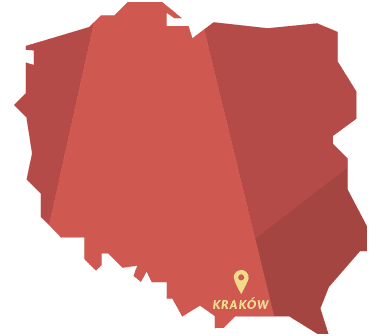Weekend in Cracow

- accommodation at 3* hotel in the city centre in double room with hb,
- sightseeing of the Old Town in Cracow,
- visit to the Wieliczka Salt Mine,
- transportation services according to the programme,
- English / German / French / Russian / Swedish / Norwegian speaking tour manager,
- entry fees according to the programme,
- vat and local taxes.
-
1Day
CRACOW – the ancient capital of Poland and residence for centuries of its kings, was the
only major city in the country to come through World War II essentially undamaged. With
a population of 760 000, Cracow itself is equally impressive and is one of the architectural
gems of central Europe, with an Old Town which retains an atmosphere of fin de siecle epoch.
Its assembly of monuments, without rival in Poland, is listed in the UNESCO Heritage List as
one of the world's twelve most significant historic cities. Cracow has traditionally been one
of the leading centres of Polish cultural, artistic and academic life. It was the capital of Poland
from 1038 to 1596. Now is Cracow the capital of the Lesser Poland Voivodeship.
Arrival in Cracow, transfer from the Cracow / Katowice
airport to hotel. In the afternoon – sightseeing of the
city. Cracow is bisected by the Vistula River, though virtually
everything of interest is concentrated on the north
bank. At the heart of things, enclosed by the Planty – a
green belt following the course of the old ramparts – is the
Old Town with its great central square, the Rynek Glowny.
Just south of the Old Town, looming above the river bank,
is Wawel – the Royal Castle Hill. The Wawel Royal Castle
and the Wawel Hill constitute the most historically and
culturally important site in Poland. For centuries the residence
of the kings of Poland has been the symbol of Polish
statehood. Now it is a museum with rich collections
of paintings, prints, sculptures, textiles, ceramics and porcelain.
The museum's holdings of oriental art include the
largest collection of Ottoman tents in Europe. -
2Day
After breakfast we continue our sightseeing of
Cracow. The next point is the visit to the St. Mary Basilica,
founded in 1222. The current building, begun in 1355 and
completed five years later, is one of the finest Gothic structures
in the country. The biggest crowds are drown by the
majestic high altar carved by the Nuremberg master Veit
Stoss between 1477 and 1489. The huge limewood polyptych
is one of the finest examples of late Gothic in Europe.
The medieval Sukiennice – a vast cloth hall, which bustles
with tourists and street sellers at almost any time of year.
Insite, the stalls of the darkened central arcade display
a collection of junk and genuine craft items from the Podhale
region. The Art Gallery on the upper floor of the Sukiennice
is also worth seeing.
In the afternoon – visit to the Wieliczka Salt Mine, that
was built in the 13th century. The mine attractions include
dozen of statues, three chapels and an entire cathedral
that has been carved out of the rock salt by the miners.
Salt crystal grottos are under strict protection since 1928,
beeing an exceptional object at the world scale. -
3Day
After breakfast time at leisure till transfer to the
Cracow / Katowice – airport.